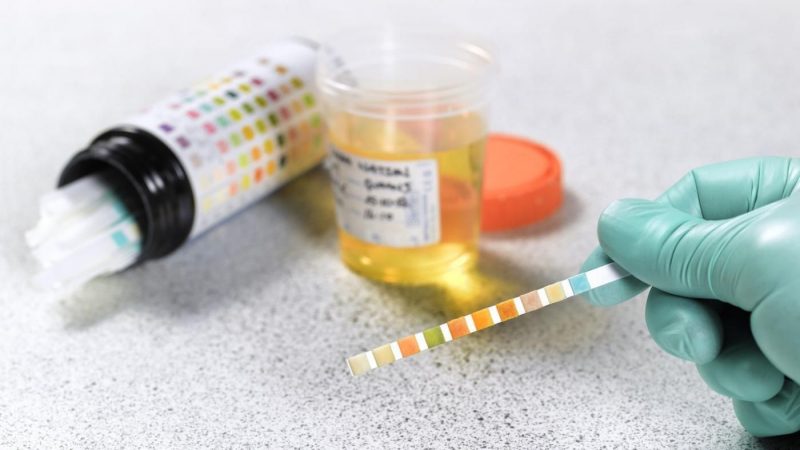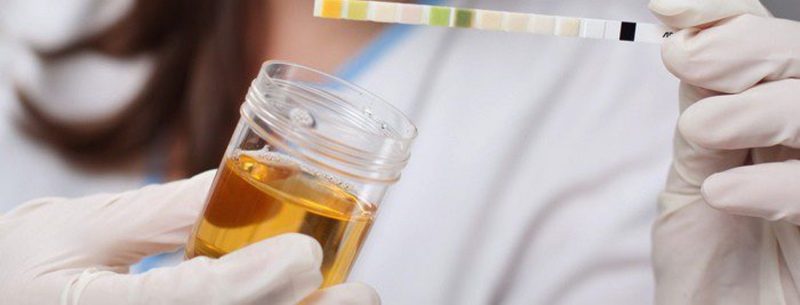Many did not even hear about maple syrup disease. This is a rare hereditary disease associated with metabolic disorders.
Material Content:
Description of the disease “maple syrup”
Urine disease with the smell of maple syrup is caused by the accumulation of branched chain amino acids and the concentration of their derivatives in body fluids. This disease has an autosomal recessive type of inheritance. If both father and mother became carriers of a mutant gene, then the probability of having a baby with a pathology is about 25%. The risk of such a manifestation rises sharply with closely related marriages.
According to statistics, leukemia in children is very rare - only 1 case per 200-300 thousand newborns. When the baby is born, there are no visible signs of health disorders.
Causes of development and symptoms of the disease
The most striking symptom of maple syrup disease is the specific smell of urine, similar to a similar liquid or burnt sugar. Signs of pathology appear by about 5-7 days of the life of the newborn:
- anxiety;
- lethargy or irritability;
- persistent vomiting;
- refusal of food;
- crossing legs;
- muscle hypertonicity;
- respiratory distress
- blue skin.
In the future, the situation worsens, there are difficulties with feeding, mental development is delayed. In severe cases, convulsions or even lethargy are observed. Such a violation of normal metabolism is very difficult and, if untreated, often leads to death due to cerebral edema.Fortunately, in most cases, timely diagnosis and intensive treatment not only allows you to save the child, but also maximize his normal life and development. But even these measures do not always work.
The causes of pathology include:
- the presence of a family marriage;
- prolonged fasting, violation of diet;
- strong physical or psycho-emotional stress;
- some infectious diseases.
But in most cases, determining its exact cause is very difficult.
Classification
 The following forms of pathology are distinguished:
The following forms of pathology are distinguished:
- Classical is the most common. Diagnosed at the beginning of a child’s life.
- Intermediate - has a milder chronic course. The first symptoms appear at the age of 2 to 12 years.
- Intermittent - characterized by a periodic nature.
The demonstration begins before 3 years. The causes of the failure are stressful situations, severe viral diseases, protein abuse, surgical interventions.
And also a thiamine-dependent form is isolated.
Diagnosis of leukinosis
 To detect the disease before the onset of the first symptoms is possible only with the help of enzyme analysis. Diagnosis is based on the study of the pedigree, analysis and comparison of the history, clinical manifestations, and laboratory results.
To detect the disease before the onset of the first symptoms is possible only with the help of enzyme analysis. Diagnosis is based on the study of the pedigree, analysis and comparison of the history, clinical manifestations, and laboratory results.
Of the instrumental methods, MRI of the brain is most often used to establish signs of edema and changes in its structure, as well as radiography, ECG, ultrasound of the kidneys, liver.
Treatment of hereditary fermentopathy
Until an accurate diagnosis is made, babies under 6 months of age should be exclusively breastfed or mixtures with a minimum protein content. From the menu of children older than six months, it is necessary to completely exclude protein products.
After confirming the disease, a small patient is prescribed a strict diet with the restriction of leucine and other substances. Proteins are completely replaced by specialized formulations of purified amino acids that meet the age-related needs of patients. With a decrease in leucine, isoleucine and valine in blood plasma to a normal level, proteins begin to be gradually introduced into the diet, but only in order to ensure the body's need for branched chain amino acids.
Food should be fractional, without interruption and hunger strike. This is especially important for babies. Parents should be trained in the rules of helping the child and organizing diet therapy both in the interictal periods and in anticipation of metabolic crises.
During exacerbations, treatment must be carried out in intensive care units or intensive care units. Often the deterioration of the patient's condition progresses so much that emergency measures are required up to the connection to the drugs to ensure the functioning of the organs. In case of inefficiency of conservative methods of treatment and in order to withdraw toxic products, hemodialysis is done.
An effective way to get rid of the pathology is liver transplantation. The procedure is expensive, but it is it that allows you to avoid lifetime compliance with the strictest diet and the development of crises. Patients who have successfully undergone transplantation need to expand the diet and provide them with all the necessary help.
Prevention
Pregnant women at risk should receive genetic counseling and prenatal diagnosis. The brothers and sisters of the patient must also pass the necessary tests in order to exclude the development of pathology. After the birth of a child with maple syrup disease, the probability of having offspring with the same pathology is approximately 25%.
Preventive measures with an already detected anomaly are designed to prevent the onset of a crisis, for which it is necessary to carefully observe a diet and timely take the necessary tests to monitor different indicators.To control the metabolic state, you can use special tests intended for use at home once every 1-2 weeks.
With early detection of pathology and careful monitoring, the prognosis of the disease is relatively favorable. After discharge from the hospital, the patient still needs outpatient monitoring by many specialists. If untreated in newborns, death occurs during the first 12 months of life.



















